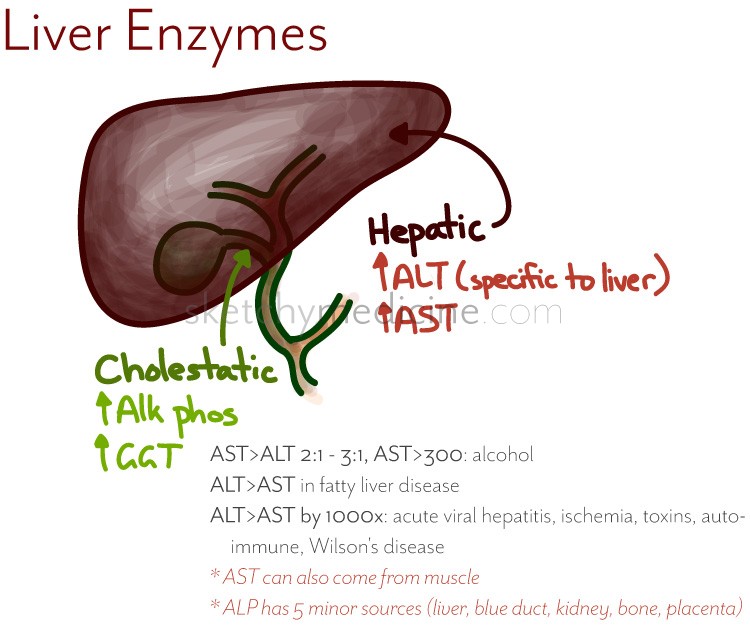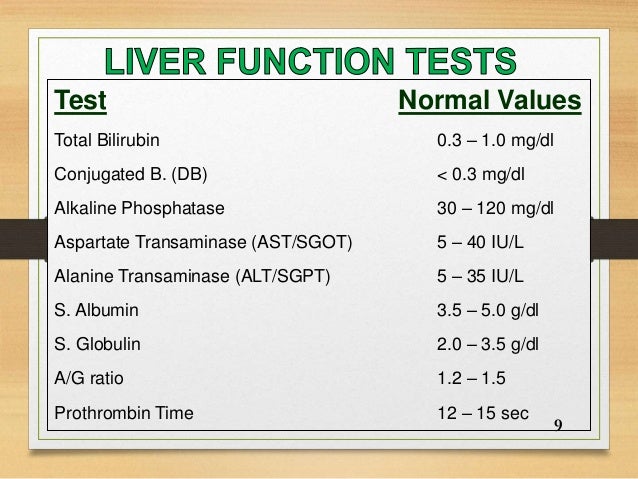Normal Liver ALT: Understanding High, Low, and Normal Results, Symptoms, and Causes
What are the normal ranges for liver ALT. How do high and low ALT levels affect liver health. What symptoms and causes are associated with abnormal ALT results. How do American guidelines define normal ALT levels.
Understanding Alanine Aminotransferase (ALT) and Its Role in Liver Health
Alanine aminotransferase (ALT) is a crucial enzyme primarily found in liver cells. Its presence in the bloodstream serves as a key indicator of liver health and function. When liver cells are damaged or die, ALT is released into the blood, causing elevated levels that can be detected through blood tests.
ALT levels are typically measured as part of a comprehensive metabolic panel or liver function test. These tests help healthcare providers assess liver health, diagnose liver conditions, and monitor the progression of liver diseases or the effectiveness of treatments.
Why is ALT important for liver health assessment?
ALT is vital for liver health assessment because:
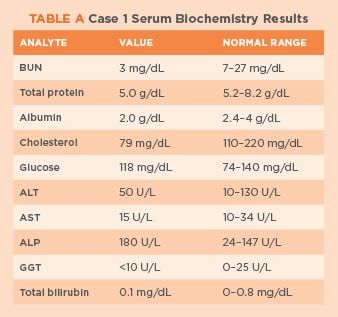
- It is highly specific to liver cells, making it a reliable indicator of liver damage
- Elevated levels can signify various liver conditions, from mild inflammation to severe disease
- Monitoring ALT levels over time can help track liver disease progression or recovery
- It aids in early detection of liver problems, allowing for timely intervention
Interpreting ALT Results: Normal, High, and Low Levels
Interpreting ALT results requires understanding the normal ranges and what deviations from these ranges might indicate. However, it’s important to note that “normal” ranges can vary depending on factors such as age, sex, and the specific laboratory conducting the test.
What are considered normal ALT levels?
According to recent American clinical guidelines, the upper reference limits (URLs) for ALT are:
- For adult males: 33 U/L
- For adult females: 25 U/L
These values are lower than previously established norms, reflecting a more stringent approach to identifying potential liver issues. It’s crucial to understand that these are general guidelines, and individual laboratories may have slightly different reference ranges.
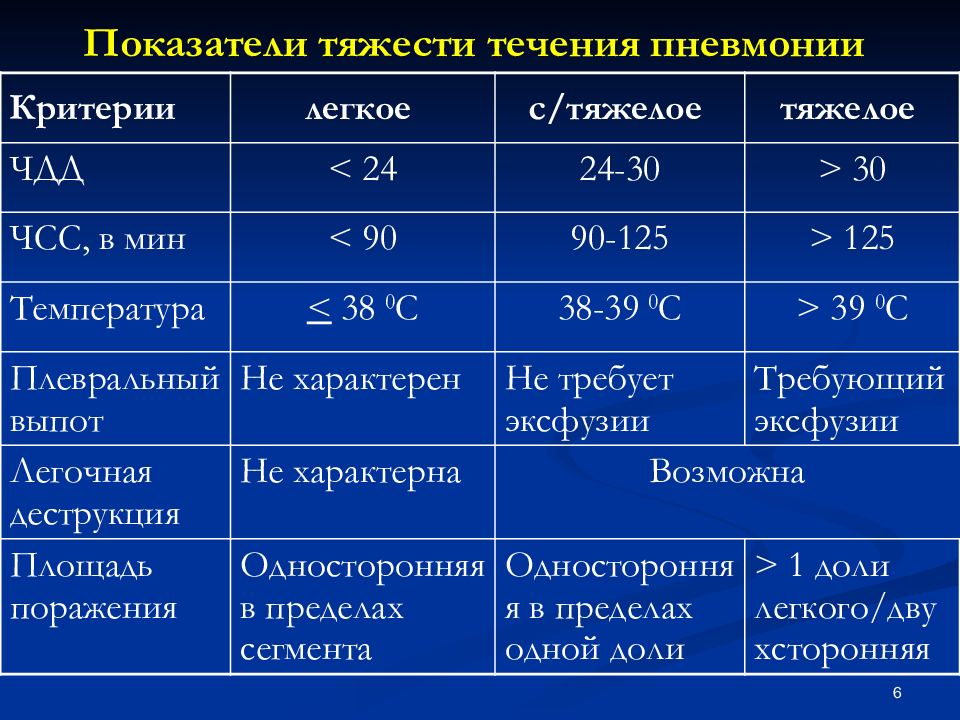
How are high ALT levels defined and what do they indicate?
ALT levels above the established URLs are considered elevated. High ALT levels can indicate various liver conditions, including:
- Hepatitis (viral, alcoholic, or autoimmune)
- Nonalcoholic fatty liver disease (NAFLD)
- Liver cirrhosis
- Drug-induced liver injury
- Liver cancer
The degree of elevation can provide clues about the severity of liver damage. Mild elevations might suggest ongoing inflammation, while significant increases could indicate acute liver injury.
What do low ALT levels mean?
While high ALT levels often receive more attention, low ALT levels can also be significant. ALT levels below the normal range may indicate:
- Vitamin B6 deficiency
- Chronic kidney disease
- Frailty in older adults
However, it’s important to note that low ALT levels are generally less concerning than elevated levels and may not always indicate a health problem.
American Liver Guidelines: Potential for Overdiagnosis?
The recent American guidelines for ALT levels have sparked discussions in the medical community about the potential for overdiagnosis. By lowering the threshold for what’s considered “normal,” these guidelines may lead to more individuals being classified as having abnormal liver function.

How might lower ALT thresholds impact patient care?
The lower ALT thresholds could have several implications:
- Increased detection of early-stage liver disease, potentially leading to earlier interventions
- Higher rates of follow-up testing and specialist referrals
- Potential for unnecessary anxiety in patients with mildly elevated ALT levels
- Increased healthcare costs associated with additional testing and consultations
While early detection of liver issues is generally beneficial, it’s crucial to balance this with the potential drawbacks of overdiagnosis and overtreatment.
Factors Influencing ALT Levels: Beyond Liver Disease
While ALT is primarily associated with liver health, several factors can influence its levels in the blood. Understanding these factors is crucial for accurate interpretation of ALT results.
What non-liver-related factors can affect ALT levels?
Several factors unrelated to liver disease can impact ALT levels:
- Age and sex: ALT levels tend to be higher in males and younger individuals
- Body mass index (BMI): Higher BMI is associated with elevated ALT levels
- Exercise: Intense physical activity can temporarily increase ALT levels
- Medications: Certain drugs can affect ALT levels, either by causing liver stress or through other mechanisms
- Alcohol consumption: Even moderate alcohol intake can influence ALT levels
- Diet: Certain dietary patterns may impact ALT levels
Healthcare providers must consider these factors when interpreting ALT results to avoid misdiagnosis or unnecessary interventions.

Symptoms Associated with Abnormal ALT Levels
Abnormal ALT levels themselves don’t typically cause symptoms. Instead, symptoms are usually related to the underlying condition causing the ALT elevation. However, individuals with liver issues that lead to elevated ALT may experience various symptoms.
What symptoms might indicate liver problems associated with high ALT?
Common symptoms that may accompany elevated ALT levels include:
- Fatigue and weakness
- Jaundice (yellowing of the skin and eyes)
- Abdominal pain or discomfort
- Nausea and loss of appetite
- Dark urine or pale stools
- Itchy skin
- Swelling in the legs and ankles
It’s important to note that many liver conditions can be asymptomatic in their early stages, which is why regular blood tests, including ALT measurements, are crucial for early detection.
Diagnostic Approach to Abnormal ALT Results
When ALT results fall outside the normal range, healthcare providers typically follow a systematic approach to determine the underlying cause and develop an appropriate treatment plan.
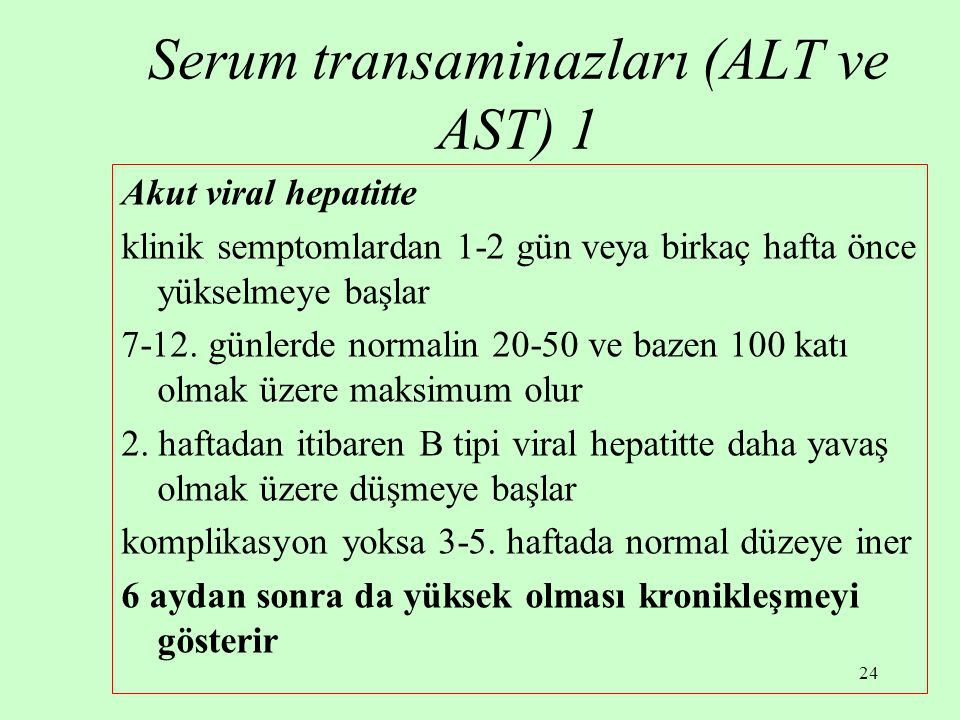
How do doctors investigate abnormal ALT levels?
The diagnostic process for abnormal ALT levels often involves:
- Repeat testing: To confirm the initial result and assess whether the elevation is persistent
- Comprehensive medical history: Including alcohol use, medications, and risk factors for liver disease
- Physical examination: Looking for signs of liver disease or other health issues
- Additional blood tests: Such as AST, alkaline phosphatase, bilirubin, and tests for viral hepatitis
- Imaging studies: Ultrasound, CT, or MRI to visualize the liver and detect structural abnormalities
- Liver biopsy: In some cases, to definitively diagnose certain liver conditions
This comprehensive approach helps ensure accurate diagnosis and appropriate management of liver conditions.
Management and Treatment of Abnormal ALT Levels
The management of abnormal ALT levels depends on the underlying cause. Treatment strategies can range from lifestyle modifications to medication and, in severe cases, liver transplantation.
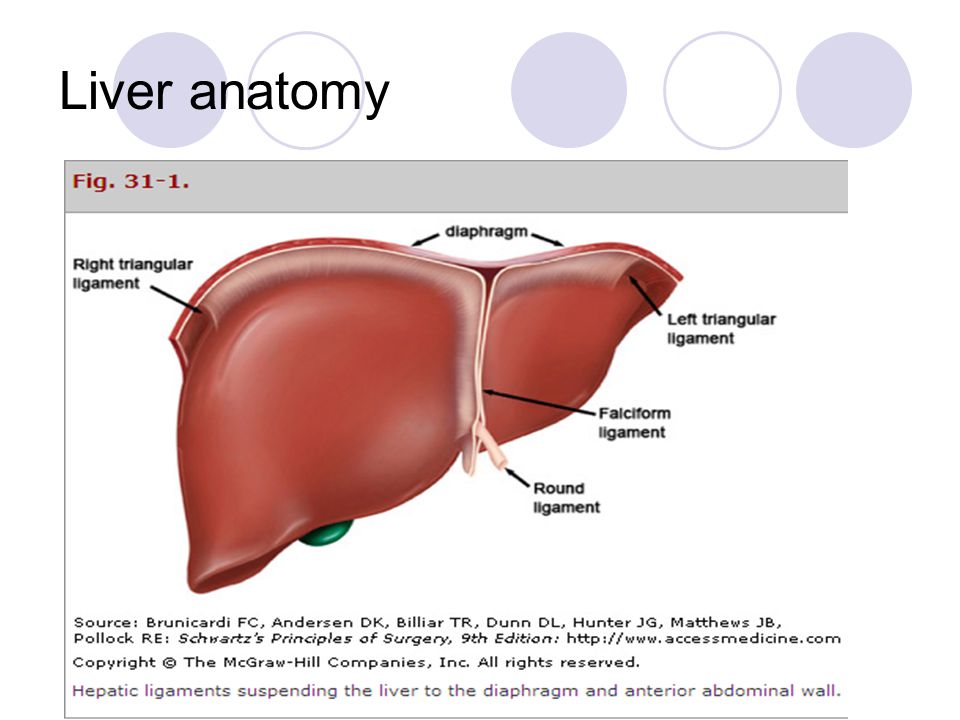
What are common approaches to managing elevated ALT levels?
Management strategies for elevated ALT levels may include:
- Lifestyle changes:
- Weight loss for individuals with NAFLD
- Alcohol cessation for alcoholic liver disease
- Dietary modifications
- Increased physical activity
- Medication management:
- Antiviral treatments for viral hepatitis
- Immunosuppressants for autoimmune hepatitis
- Discontinuation or adjustment of hepatotoxic medications
- Regular monitoring: Periodic blood tests to track ALT levels and overall liver function
- Treatment of underlying conditions: Addressing metabolic disorders, diabetes, or other health issues that may be impacting liver health
- Liver support therapies: In cases of acute liver failure or severe chronic liver disease
The specific treatment plan will depend on the individual’s diagnosis, overall health status, and other relevant factors. Healthcare providers work closely with patients to develop personalized management strategies aimed at improving liver health and preventing disease progression.
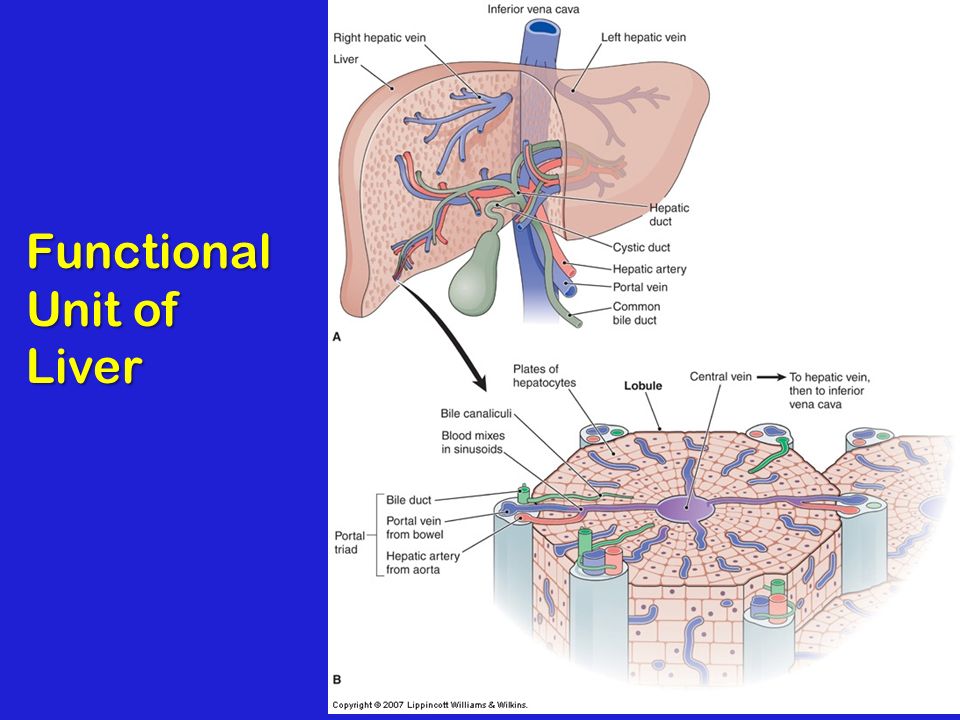
Prevention and Liver Health Maintenance
Maintaining healthy ALT levels and overall liver function is crucial for long-term health. While some liver conditions are not preventable, many lifestyle factors can significantly impact liver health and ALT levels.
How can individuals maintain healthy ALT levels and liver function?
To promote liver health and maintain normal ALT levels, consider the following strategies:
- Maintain a healthy weight: Obesity is a significant risk factor for NAFLD and other liver conditions
- Limit alcohol consumption: Excessive alcohol use can lead to alcoholic liver disease
- Practice safe sex and avoid sharing needles: To reduce the risk of viral hepatitis
- Exercise regularly: Physical activity can improve liver function and overall health
- Eat a balanced diet: Focus on whole foods, fruits, vegetables, and lean proteins
- Stay hydrated: Adequate water intake supports liver function
- Avoid unnecessary medications: Use over-the-counter drugs judiciously and follow prescribed dosages
- Get vaccinated: Hepatitis A and B vaccines can prevent these forms of viral hepatitis
- Manage chronic conditions: Control diabetes, high cholesterol, and other health issues that can impact liver health
- Regular check-ups: Schedule regular health screenings, including liver function tests
By adopting these healthy lifestyle practices, individuals can significantly reduce their risk of liver disease and maintain healthy ALT levels. However, it’s important to remember that some liver conditions have genetic or autoimmune components that may not be preventable through lifestyle measures alone.

Regular communication with healthcare providers, adherence to recommended screening schedules, and prompt attention to any signs of liver dysfunction are essential components of maintaining optimal liver health. By staying informed and proactive, individuals can play an active role in protecting their liver and overall well-being.
American Liver Guidelines and Cutoffs for “Normal” ALT: A Potential for Overdiagnosis | Clinical Chemistry
Journal Article
Mauro Panteghini,
Mauro Panteghini
Search for other works by this author on:
Oxford Academic
Google Scholar
Khosrow Adeli,
Khosrow Adeli
Search for other works by this author on:
Oxford Academic
Google Scholar
Ferruccio Ceriotti,
Ferruccio Ceriotti
Search for other works by this author on:
Oxford Academic
Google Scholar
Sverre Sandberg,
Sverre Sandberg
Search for other works by this author on:
Oxford Academic
Google Scholar
Andrea Rita Horvath
Andrea Rita Horvath
Search for other works by this author on:
Oxford Academic
Google Scholar
Clinical Chemistry, Volume 63, Issue 7, 1 July 2017, Pages 1196–1198, https://doi. org/10.1373/clinchem.2017.274977
org/10.1373/clinchem.2017.274977
Published:
01 July 2017
Article history
Received:
05 April 2017
Accepted:
18 April 2017
Published:
01 July 2017
Navbar Search Filter
Clinical ChemistryThis issueAACC JournalsBiochemistryMedical SkillsPathologyResearch Methods in Life SciencesBooksJournalsOxford Academic
Mobile Enter search term
Close
Navbar Search Filter
Clinical ChemistryThis issueAACC JournalsBiochemistryMedical SkillsPathologyResearch Methods in Life SciencesBooksJournalsOxford Academic
Enter search term
Advanced Search
In 2 recent American clinical guidelines dealing with laboratory tests for evaluation of liver disease, key recommendations relate to alanine aminotransferase (ALT)6 upper reference limits (URLs) to be used as action limits in interpreting abnormal results of this enzyme (1, 2). In adults, the American College of Gastroenterology (ACG) recommends ALT URLs of 33 U/L for males and 25 U/L for females, respectively, and that individuals with enzyme catalytic activity concentrations above these URLs should be further investigated (1). In children, experts of the North American Society of Pediatric Gastroenterology, Hepatology and Nutrition (NASPGHAN) state that the interpretation of ALT should be based upon gender-specific URLs (26 U/L for boys and 22 U/L for girls).
In adults, the American College of Gastroenterology (ACG) recommends ALT URLs of 33 U/L for males and 25 U/L for females, respectively, and that individuals with enzyme catalytic activity concentrations above these URLs should be further investigated (1). In children, experts of the North American Society of Pediatric Gastroenterology, Hepatology and Nutrition (NASPGHAN) state that the interpretation of ALT should be based upon gender-specific URLs (26 U/L for boys and 22 U/L for girls).
We have some reservations about the universal application of these ALT cutoffs and we are concerned that the implementation of these recommendations may lead to overdiagnosis and unnecessary further testing. The contentious issues and our opinion about those are summarized below.
The first problem is the analytical variation among commercial assays measuring ALT. The mentioned guidelines recommend the use of universal cutoffs for ALT without considering any differences between laboratory assays. Reassuring statements are rather reported as follows: “interlaboratory differences for ALT levels have not been reported to differ significantly” (1) or “the [ALT] assay is standardized between facilities” (2). In principle, fixed limits, be they medical decision thresholds or URLs, can be used only if the laboratory test in question is standardized and if this standardization is implemented in laboratories using the same limits. Despite the availability of a reference measurement system (RMS) for standardizing ALT results in clinical samples, the current evidence is, however, that ALT is still measured by methods that give quite differing values (3). Assay performance also varies considerably within users of instruments from the same manufacturer (4). This is mainly due to the use on the same platforms of various reagents with different analytical selectivity for ALT. For measuring aminotransferases, almost all manufacturers still market assays with or without the addition of pyridoxal-5-phosphate (P-5′-P), and declare that both are traceable to the RMS.
Reassuring statements are rather reported as follows: “interlaboratory differences for ALT levels have not been reported to differ significantly” (1) or “the [ALT] assay is standardized between facilities” (2). In principle, fixed limits, be they medical decision thresholds or URLs, can be used only if the laboratory test in question is standardized and if this standardization is implemented in laboratories using the same limits. Despite the availability of a reference measurement system (RMS) for standardizing ALT results in clinical samples, the current evidence is, however, that ALT is still measured by methods that give quite differing values (3). Assay performance also varies considerably within users of instruments from the same manufacturer (4). This is mainly due to the use on the same platforms of various reagents with different analytical selectivity for ALT. For measuring aminotransferases, almost all manufacturers still market assays with or without the addition of pyridoxal-5-phosphate (P-5′-P), and declare that both are traceable to the RMS. However, it is impossible to calibrate procedures for aminotransferases that do not incorporate P-5′-P using a procedure that does, such as the reference measurement procedure (RMP), because the ratio of preformed holoenzyme to apoenzyme differs among specimens (5). A recent study confirmed that assays without P-5′-P activation give different results compared to assays with P-5′-P activation and are often unable to fulfill quality specifications when ALT results are compared to the RMP (6). This is immediately evident when looking at the Canadian Laboratory Initiative on Pediatric Reference Intervals (CALIPER) data (7): in the age range 13 to 19 years, ALT URLs were 22 U/L and 24 U/L for females and males, respectively, becoming 24 U/L and 33 U/L when reagents including P-5′-P were used. Therefore, the still significant differences in measuring ALT carry the risk that many individuals might be misclassified when clinicians start using these universally recommended cutoffs.
However, it is impossible to calibrate procedures for aminotransferases that do not incorporate P-5′-P using a procedure that does, such as the reference measurement procedure (RMP), because the ratio of preformed holoenzyme to apoenzyme differs among specimens (5). A recent study confirmed that assays without P-5′-P activation give different results compared to assays with P-5′-P activation and are often unable to fulfill quality specifications when ALT results are compared to the RMP (6). This is immediately evident when looking at the Canadian Laboratory Initiative on Pediatric Reference Intervals (CALIPER) data (7): in the age range 13 to 19 years, ALT URLs were 22 U/L and 24 U/L for females and males, respectively, becoming 24 U/L and 33 U/L when reagents including P-5′-P were used. Therefore, the still significant differences in measuring ALT carry the risk that many individuals might be misclassified when clinicians start using these universally recommended cutoffs.
Unfortunately a majority, if not all, of the studies reporting reference values for ALT fail to demonstrate the traceability of their assays to the RMS. In addition, very different or even inappropriate criteria have been used for the selection of a reference population and the statistical procedures used to define the reference intervals also have been variable. These methodological issues were raised in one of the international hepatology journals over 10 years ago (8), but clinical journals have continued publishing papers without special attention being paid to these important aspects (9, 10). In a multicenter study fulfilling the rigorous design required to produce accurate reference intervals (11) and using ALT assays traceable to the RMS, we obtained ALT URLs in adults clearly higher than those reported in the mentioned American liver guidelines (12). By enrolling healthy individuals from 4 different ethnic groups (Nordic countries, Italy, Turkey and China), we confirmed a significant difference in ALT activities between adult males and females. Corresponding ALT URLs were 59 U/L and 41 U/L, respectively (12). One could observe that the URLs in this study may have suffered from some bias in selecting the population because individuals with a body mass index (BMI) of up to 30 kg/m2 were included.
In addition, very different or even inappropriate criteria have been used for the selection of a reference population and the statistical procedures used to define the reference intervals also have been variable. These methodological issues were raised in one of the international hepatology journals over 10 years ago (8), but clinical journals have continued publishing papers without special attention being paid to these important aspects (9, 10). In a multicenter study fulfilling the rigorous design required to produce accurate reference intervals (11) and using ALT assays traceable to the RMS, we obtained ALT URLs in adults clearly higher than those reported in the mentioned American liver guidelines (12). By enrolling healthy individuals from 4 different ethnic groups (Nordic countries, Italy, Turkey and China), we confirmed a significant difference in ALT activities between adult males and females. Corresponding ALT URLs were 59 U/L and 41 U/L, respectively (12). One could observe that the URLs in this study may have suffered from some bias in selecting the population because individuals with a body mass index (BMI) of up to 30 kg/m2 were included. However, by excluding all individuals with BMI ≥25 kg/m2, the resulting URLs were 49 U/L for men and 33 U/L for women, which are still higher than those proposed by ACG (33 U/L and 25 U/L). Applying the latter recommended cutoffs to our population with BMI <25 kg/m2, 13.7% of males and 10.9% of females would have been classified as “abnormal,” consequently deserving further studies by the clinicians.
However, by excluding all individuals with BMI ≥25 kg/m2, the resulting URLs were 49 U/L for men and 33 U/L for women, which are still higher than those proposed by ACG (33 U/L and 25 U/L). Applying the latter recommended cutoffs to our population with BMI <25 kg/m2, 13.7% of males and 10.9% of females would have been classified as “abnormal,” consequently deserving further studies by the clinicians.
As a result of the inappropriate application of the above laboratory-related concepts, there is a danger that universally recommended URLs for ALT will lead to the “overdiagnosis” of many individuals, potentially generating unnecessary further investigations and healthcare costs. In the mentioned guidelines, ALT values above the URLs are used to trigger further clinical and laboratory investigations. For instance, the NASPGHAN panel recommends follow-up tests to explore reasons for increased ALT, including laboratory tests for excluding viral infections, endocrine disorders, autoimmune and genetic causes.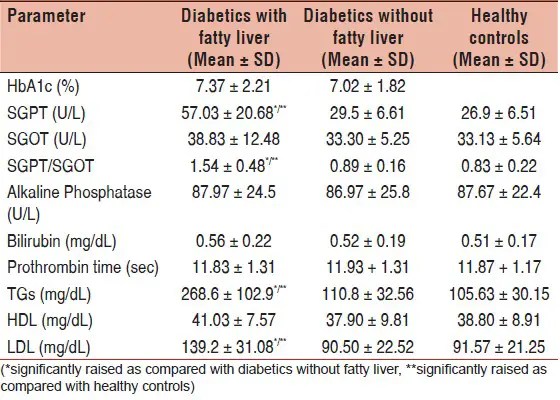 Incorrect setting of the ALT URLs can result in costly and possibly invasive (e.g., liver biopsy) confirmatory evaluations. Although ALT screening seems to be a cheap intervention, subsequent costs and burdens to the healthcare system and to patients might be substantial.
Incorrect setting of the ALT URLs can result in costly and possibly invasive (e.g., liver biopsy) confirmatory evaluations. Although ALT screening seems to be a cheap intervention, subsequent costs and burdens to the healthcare system and to patients might be substantial.
A further concern is summarized by the question: what is the “normal” catalytic activity concentration for ALT? Apart from the above-mentioned problems related to the different assays for ALT measurement, there is also confusion in reported studies regarding when the concept of URL, as defined in the CLSI EP28-A3 standard (11), should be applied and when decision limits or outcome-based thresholds should be recommended, for example, to exclude hepatitis C virus or other viral infections or nonalcoholic fatty liver disease (NAFLD) (13). We advise that guideline developers do not use URLs and decision limits interchangeably and that they synthesize the evidence behind these values while considering the clear distinction of these terminologies and their clinical meaning.
Although we understand that the guideline panels’ priority of lowering the ALT cutoffs is to avoid missing cases with disease present, we have not yet seen any outcome data on patients screened vs. not screened by ALT for NAFLD. In such cases, obesity is the underlying pathophysiology needing intervention, but ALT screening is not essential for guiding the management of patients in losing weight. A recent guideline by the National Institute for Health and Care Excellence (NICE) in the UK does not include a similar screening scenario for NAFLD, and its evidence summary is helpful in demonstrating that there is only very weak evidence to support the use of ALT as a screening tool for this clinical condition (14).
We note in both American guideline panels that no laboratory professionals were involved to offer specialist advice on the critical appraisal of the evidence on ALT URLs published in the literature. The NICE guideline, however, did include a laboratory expert in its panel and that panel’s conclusions and recommendations related to the clinical utility of ALT differed substantially from those of the American guidelines. We strongly believe that only a multidisciplinary approach can help to focus guideline panels on important laboratory-related items that can influence the implementation of recommendations and subsequent healthcare outcomes (15). The issues we have raised highlight the critical need for laboratory expertise when drafting clinical guidelines involving the use of laboratory tests.
We strongly believe that only a multidisciplinary approach can help to focus guideline panels on important laboratory-related items that can influence the implementation of recommendations and subsequent healthcare outcomes (15). The issues we have raised highlight the critical need for laboratory expertise when drafting clinical guidelines involving the use of laboratory tests.
6 Nonstandard abbreviations
ALT
alanine aminotransferase
URL
upper reference limit
ACG
American College of Gastroenterology
NASPGHAN
North American Society of Pediatric Gastroenterology, Hepatology and Nutrition
RMS
reference measurement system
RMP
reference measurement procedure
CALIPER
Canadian Laboratory Initiative on Pediatric Reference Intervals
NAFLD
nonalcoholic fatty liver disease
NICE
National Institute for Health and Care Excellence.

Author Contributions:All authors confirmed they have contributed to the intellectual content of this paper and have met the following 3 requirements: (a) significant contributions to the conception and design, acquisition of data, or analysis and interpretation of data; (b) drafting or revising the article for intellectual content; and (c) final approval of the published article.
Authors’ Disclosures or Potential Conflicts of Interest:No authors declared any potential conflicts of interest.
References
1.
Kwo
PY
,
Cohen
SM
,
Lim
JK
.
ACG clinical guideline: evaluation of abnormal liver chemistries
.
Am J Gastroenterol
2017
;
112
:
18
–
35
.
2.
Vos
MB
,
Abrams
SH
,
Barlow
SE
,
Caprio
S
,
Daniels
SR
,
Kohli
R
, et al.
NASPGHAN clinical practice guideline for the diagnosis and treatment of nonalcoholic fatty liver disease in children
.
J Pediatr Gastroenterol Nutr
2017
;
64
:
319
–
34
.
3.
Infusino
I
,
Frusciante
E
,
Braga
F
,
Panteghini
M
.
Progress and impact of enzyme measurement standardization
.
Clin Chem Lab Med
2017
;
55
:
334
–
40
.
4.
Jansen
R
,
Jassam
N
,
Thomas
A
,
Perich
C
,
Fernandez-Calle
P
,
Faria
AP
, et al.
A category 1 EQA scheme for comparison of laboratory performance and method performance: an international pilot study in the framework of the Calibration 2000 project
.
Clin Chim Acta
2014
;
432
:
90
–
8
.
5.
Panteghini
M
,
Bais
R
.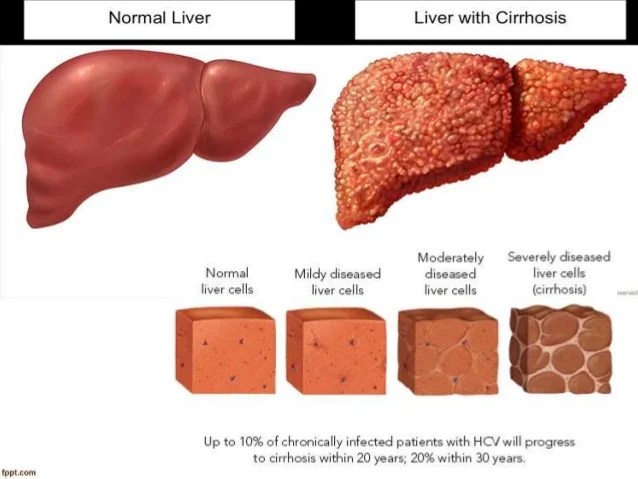
Serum enzymes
. In:
Rifai
N
,
Horvath
RH
,
Wittwer
C
, editors.
Tietz textbook of clinical chemistry and molecular diagnostics
. 6th ed.
Elsevier Saunders
:
St. Louis
;
2017
. p
318
–
36
.
6.
Goossens
K
,
Van Uytfanghe
K
,
Thienpont
LM
.
Trueness and comparability assessment of widely used assays for 5 common enzymes and 3 electrolytes
.
Clin Chim Acta
2015
;
442
:
44
–
5
.
7.
Colantonio
DA
,
Kyriakopoulou
L
,
Chan
MK
,
Daly
CH
,
Brinc
D
,
Venner
AA
, et al.
Closing the gaps in pediatric laboratory reference intervals: a CALIPER database of 40 biochemical markers in a healthy and multiethnic population of children
.
Clin Chem
2012
;
58
:
854
–
68
.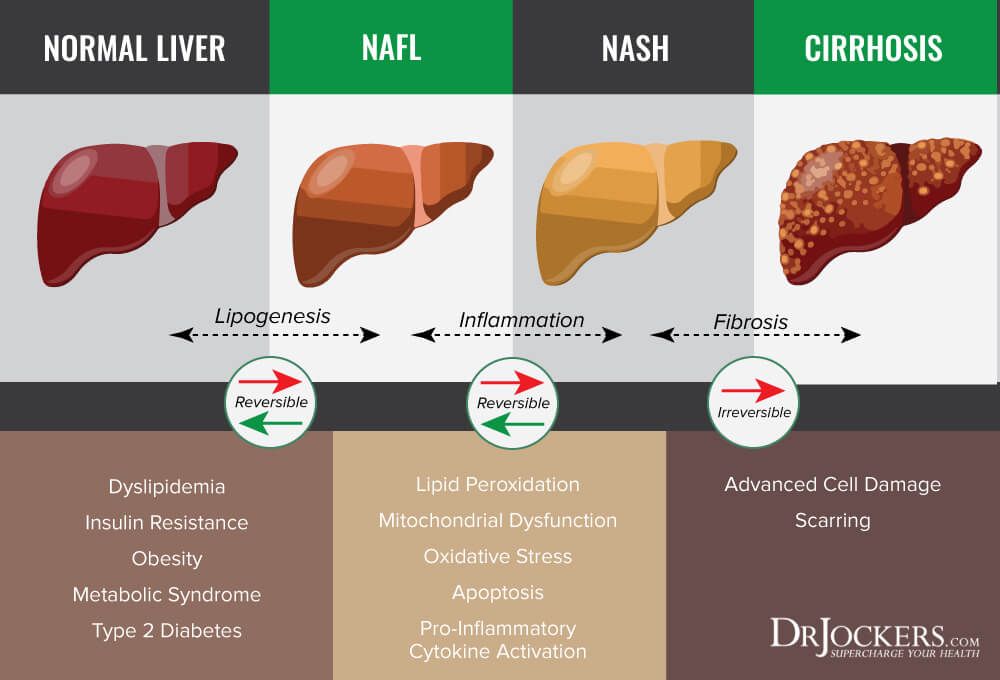
8.
Ceriotti
F
,
Schumann
G
,
Panteghini
M
.
Redefining reference limits needs more attention to the analytical aspects
.
Liver Int
2006
;
26
:
1155
–
6
.
9.
Lee
JK
,
Shim
JH
,
Lee
HC
,
Lee
SH
,
Kim
KM
,
Lim
Y-S
, et al.
Estimation of the healthy upper limits for serum alanine aminotransferase in asian populations with normal liver histology
.
Hepatology
2010
;
51
:
1577
–
83
.
10.
Schwimmer
JB
,
Dunn
W
,
Norman
GJ
,
Pardee
PE
,
Middleton
MS
,
Kerkar
N
, et al.
SAFETY study: alanine aminotransferase cutoff values are set too high for reliable detection of pediatric chronic liver disease
.
Gastroenterology
2010
;
138
:
1357
–
64
.
11.
CLSI
.
Defining, establishing, and verifying reference intervals in the clinical laboratory; approved guideline—third edition
.
CLSI document EP28–A3c
,
Wayne, (PA)
:
CLSI
;
2008
.
12.
Ceriotti
F
,
Henny
J
,
Queraltó
J
,
Ziyu
S
,
Özarda
Y
,
Chen
B
, et al.
Common reference intervals for aspartate aminotransferase (AST), alanine aminotransferase (ALT) and γ-glutamyl transferase (GGT) in serum: results from an IFCC multicenter study
.
Clin Chem Lab Med
2010
;
48
:
1593
–
601
.
13.
Miller
WG
,
Horowitz
GL
,
Ceriotti
F
,
Fleming
JK
,
Greenberg
N
,
Katayev
A
, et al.
Reference intervals: strengths, weaknesses, and challenges
.
Clin Chem
2016
;
62
:
916
–
23
.
14.
National Institute for Health and Care Excellence
.
Non-alcoholic fatty liver disease: assessment and management
.
2016
.
NICE guideline NG49
.
(Accessed May 2017).
15.
Aakre
KM
,
Langlois
MR
,
Watine
J
,
Barth
JH
,
Baum
H
,
Collinson
P
, et al.
Critical review of laboratory investigations in clinical practice guidelines: proposals for the description of investigation
.
Clin Chem Lab Med
2013
;
51
:
1217
–
26
.
© 2017 The American Association for Clinical Chemistry
Issue Section:
Opinion
Download all slides
Advertisement
Citations
Altmetric
More metrics information
Email alerts
Article activity alert
Advance article alerts
New issue alert
Receive exclusive offers and updates from Oxford Academic
Citing articles via
-
Latest
-
Most Read
-
Most Cited
Nanopore Third-Generation Sequencing for Comprehensive Analysis of Hemoglobinopathy Variants
Assessing the Quality of Metagenomic Next-Generation Sequencing for Pathogen Detection in Lower Respiratory Infections
Tissue Mass Spectrometry: How Solid Is Our Future?
Metrologically Traceable Quantification of 3 Apolipoprotein E Isoforms in Cerebrospinal Fluid
A Novel β-Globin Locus Deletional Syndrome: εγ-Thalassemia
Advertisement
How to lower ALT levels: 8 natural methods
Alanine aminotransferase (ALT) is a liver enzyme, and high levels can indicate liver damage. Taking steps to lower ALT levels can help the liver recover.
Taking steps to lower ALT levels can help the liver recover.
Lifestyle changes, such as a healthful diet and regular exercise, can all help to lower ALT levels.
This article looks at eight ways people can try to reduce their ALT levels. It also discusses the ideal levels and how to measure them.
Share on PinterestA person may be able to lower ALT levels by drinking coffee.
ALT, which stands for alanine aminotransferase, is an enzyme in the liver. Enzymes help the body carry out chemical reactions to function properly.
ALT is essential for filtering toxins from the blood, storing nutrients, and producing bile. Damage or inflammation to the liver causes the liver to release these enzymes into the bloodstream, leading to elevated levels of ALT in the body.
Lowering ALT levels can help the liver carry out its functions. People should treat any causes of elevated ALT, such as liver damage or diabetes, with the help of a medical professional. Natural methods can complement medical treatment to help lower ALT levels.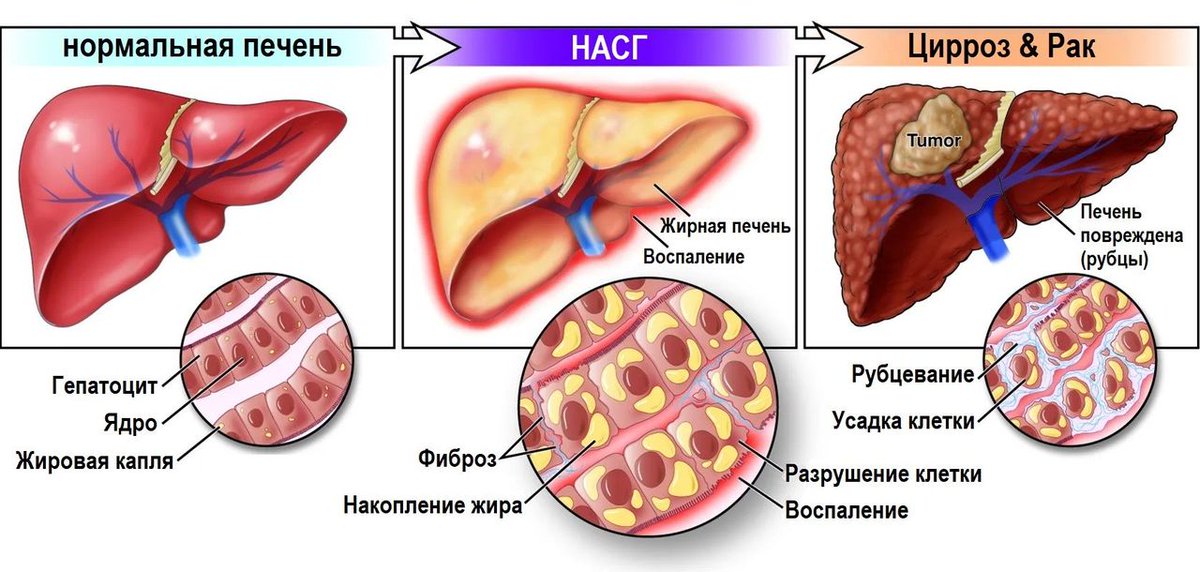
Natural methods include:
Drinking coffee can help to lower ALT levels. A review from 2017 looks at several studies that show drinking a cup or more of coffee each day reduces ALT levels.
A study from 2015 compared the risk of liver cancer and chronic liver disease between coffee drinkers and non-coffee-drinkers in more than 200,000 people from Hawaii and California.
The study found that people who drank 2–3 cups of coffee each day had a 38% lower risk of liver cancer (hepatocellular carcinoma) and 46% lower risk of death from chronic liver disease, compared to non-coffee-drinkers.
In addition, those who drank 4 or more cups of coffee a day had a 41% lower risk of liver cancer and 71% lower risk of dying from chronic liver disease.
Researchers are unsure whether it is the caffeine in coffee that has liver protecting properties, or if it is due to the antioxidants in coffee. A study from 2014 found that both caffeinated and decaffeinated coffee lowered ALT levels.
Regular exercise may help improve liver health, and research suggests physical activity is an important factor in treating liver disease.
A 2018 article from the Journal of Hepatology recommends a regular exercise program as part of treatment for chronic diseases, such as cirrhosis.
Research has found that weight loss is an important factor in treating fatty liver disease and in preventing fibrosis of the liver. Weight loss improves insulin sensitivity and decreases inflammation. Regular exercise, along with a reduction in calories, may also reduce the risk of liver cancer.
Increasing exercise and decreasing calorie intake through a balanced diet will help people lose weight.
A folate deficiency may increase the risk of damage to the liver and potentially have a link to liver cancer. People may improve their liver health by eating foods high in folate, such as:
- beef liver
- spinach
- black-eyed peas
- fortified breakfast cereals
- asparagus
- Brussels sprouts
- lettuce
- avocado
Taking supplements of folic acid may also help lower ALT levels. A 2011 study with 455 participants found that increased folic acid supplementation lowered ALT levels, particularly in men and those with elevated ALT levels. Researchers found that a daily dose of 0.8 milligrams (mg) folic acid may help in lowering ALT levels.
A 2011 study with 455 participants found that increased folic acid supplementation lowered ALT levels, particularly in men and those with elevated ALT levels. Researchers found that a daily dose of 0.8 milligrams (mg) folic acid may help in lowering ALT levels.
Share on PinterestEating more vegetables may improve the health of the liver.
A small scale study from 2013 looked at the effect of changing lunch to a healthier option had on ALT levels in 10 males.
Compared to their previous lunches, people had 20.3% lower ALT after eating more healthful lunches for 1 month. The nutritional lunches contained:
- more vegetables
- less animal protein and more plant based protein
- foods with lower energy density
- more fiber
- increased amounts of potassium, vitamin B6, and folic acid
A 2007 study found a diet lower in carbohydrates decreased ALT levels in adults who were obese and insulin-resistant.
For a healthy liver, the American Liver Foundation recommend eating a balanced diet that involves:
- avoiding processed foods, especially fried foods and foods high in sugar, fat, and salt
- avoiding raw or undercooked shellfish
- increasing dietary fiber by eating whole grains, fruit, and vegetables
Eating organic food, where possible, may also help the liver by reducing the level of toxins entering the body.
A 2018 study found a link between higher levels of both low-density lipoprotein (LDL) and high-density lipoprotein (HDL) and elevated levels of liver enzymes in adults in the United States.
People can reduce high cholesterol levels through regular exercise and a healthful diet that includes:
- reducing meat and saturated fat
- avoiding trans fats
- increasing dietary fiber
- increasing intake of omega-3 fatty acids
Certain drugs and supplements can cause further damage to the liver.
Acetaminophen can damage the liver if people take too much of it. If it is necessary for people with liver damage to take acetaminophen, they should take no more than 2,000 mg per day. People who regularly drink alcohol should avoid taking acetaminophen, or only have it in very small doses if necessary.
According to the American College of Gastroenterology, some herbal supplements can also increase toxicity in the liver, including:
- chaparral
- comfrey tea
- kava
- skullcap
- yohimbe
Excess iron or vitamin A can also be harmful to the liver in high doses.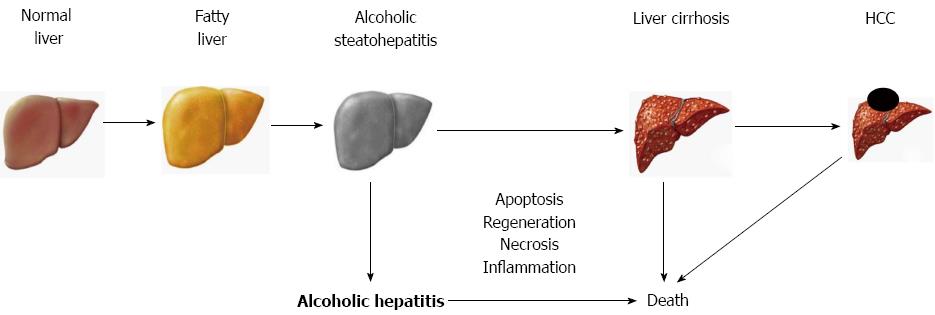 People with high ALT levels should check with their doctor to ensure that any medications, supplements, or herbal remedies are safe to take.
People with high ALT levels should check with their doctor to ensure that any medications, supplements, or herbal remedies are safe to take.
Alcohol can increase damage to the liver, so people with high ALT levels should avoid consuming alcohol to protect the liver from further damage.
People who smoke should stop smoking, and others can try to avoid secondhand smoke to reduce the toxic load on the liver.
People can also take care to avoid high levels of chemical toxins in the air where possible and consider using an air purifier in the home to remove excess toxins.
Share on PinterestA person can speak to their doctor to see if they need to take steps to improve their ALT levels.
People can see their doctor for a liver blood test, which will show levels of ALT in their body. A doctor will take blood from the arm and send the sample off for testing at a laboratory.
According to a 2010 review, normal ALT levels are less than 50 units per liter (U/L).
However, some researchers have recommended lowering the accepted amount for normal. This is because more people are developing obesity and non-alcoholic fatty liver disease, and by reducing the upper threshold for normal ALT levels, doctors may be able to detect potential liver health issues earlier.
This is because more people are developing obesity and non-alcoholic fatty liver disease, and by reducing the upper threshold for normal ALT levels, doctors may be able to detect potential liver health issues earlier.
Following this recommendation, ideal levels of ALT are:
- lower than 31 U/L for females
- less than 40 U/L for males
Very high levels may indicate liver problems, such as hepatitis.
Very low levels of ALT may also pose health risks and increase frailty. One study found that low ALT levels in people with coronary heart disease increased the risk of long term mortality. ALT levels that are 17 U/L may predict an increased risk of frailty and increased mortality.
People can discuss their ALT results with their doctor to find out if their ALT levels are healthful, or whether they need to take steps to alter them.
High levels of the liver enzyme ALT can be a sign of liver damage. People can lower their ALT levels by making lifestyle changes, such as taking regular exercise and changing their diet.
Increasing fiber intake, reducing saturated fats and processed foods, as well as consuming a range of nutrients from fruits and vegetables may all help to lower levels.
People can see their doctor for an ALT test if they notice any symptoms of liver damage to check whether their ALT levels are within the normal range.
Interpretation of liver tests and their disorders
04.10.2018
PDF article
It is not uncommon for a clinician to examine the liver to assess its functional state. The most commonly used indicators for this are alanine aminotransferase (ALT), aspartate aminotransferase (AST), alkaline phosphatase (AP) and bilirubin. The measurement of these indicators is traditionally called “liver tests”. Some recommendations of the American College of Gastroenterology (2016) regarding the appointment and interpretation of liver tests are presented in the table.
Hepatocyte damage is usually characterized by a disproportionate increase in AST and ALT against a background of normal or slightly altered ALP; cholestasis, on the contrary, a sharp increase in alkaline phosphatase compared with ALT and AST. As for bilirubin, most of it circulates in the blood in an unconjugated form, and elevated conjugated bilirubin may indicate both hepatocyte damage and cholestasis.
Diagnostic search for laboratory-detected lesions of hepatocytes should include tests for viral hepatitis A, B and C, detection of NAFLD and ALD, screening for hereditary hemochromatosis, autoimmune hepatitis (AIH), Wilson’s disease, α-1-antitrypsin deficiency. The medical history should also be taken into account. With an increase in alkaline phosphatase, it is necessary to diagnose PBC and primary sclerosing cholangitis.
It is important that normal laboratory values are usually defined as the average value in a healthy population ± 2 standard deviations. This definition of the norm covers 95% of people, i.e., in 2.5% of the world’s population, these indicators, by definition, will exceed the norm. The normal levels of ALP and bilirubin differ less in different laboratories, while there is significant variability for ALT.
This definition of the norm covers 95% of people, i.e., in 2.5% of the world’s population, these indicators, by definition, will exceed the norm. The normal levels of ALP and bilirubin differ less in different laboratories, while there is significant variability for ALT.
For example, in one study, 67 laboratories analyzed used an upper limit of normal (ULN) ALT of 31 to 72 U/L. It depends on the equipment of the laboratory, different methods for determining the quantitative indicator of the norm, the characteristics of the population used as healthy.
ALT is a more specific marker of liver damage than AST, but a normal ALT level does not rule out significant liver disease. An increase in AST without a concomitant increase in ALT may indicate damage to the heart or muscles. A borderline increase in AST and/or ALT is considered to be <2×ULN, slight - 2-5×ULN, moderate -5-15 ULN, severe - >15×ULN, and massive – >10,000 IU/L. The diagnostic algorithm at various levels of increase is shown in Figures 1-5.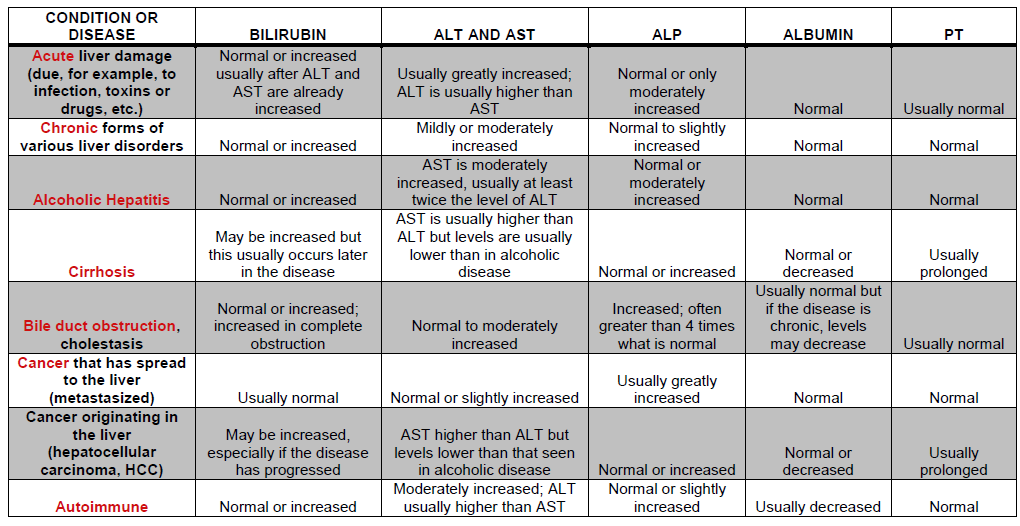
AP is a member of the family of zinc metalloproteinases that catalyze the hydrolysis of phosphate esters at alkaline pH.
Interestingly, in people with blood type 1 or 2, serum ALP may increase after eating fatty foods, although this metabolic feature is rarely used in practice. The main reasons for the increase in the level of alkaline phosphatase are obstruction of the biliary tract (most often; possibly even in the absence of elevated bilirubin), pregnancy; Also, the level of alkaline phosphatase is increased in children and the elderly, especially in women. With a parallel increase in GGT, it can be concluded that the hepatic cause of the increase in alkaline phosphatase.
Bilirubin, bound to albumin, is formed from the breakdown of old red blood cells and predominantly circulates in unconjugated form. Unconjugated (indirect) bilirubin is not excreted in the urine. In turn, conjugated bilirubin becomes water-soluble and excreted into bile, then converted by intestinal bacteria into urobilinogen, excreted in urine and feces. It is the absence of urobilinogen that gives the feces a discolored appearance in violation of the outflow of bile. Unconjugated bilirubin makes up about 70% of total serum bilirubin.
It is the absence of urobilinogen that gives the feces a discolored appearance in violation of the outflow of bile. Unconjugated bilirubin makes up about 70% of total serum bilirubin.
Determination of bilirubin fractions is especially important when ALT, AST and ALP are in the normal range or slightly changed. If total bilirubin is elevated, mainly due to unconjugated bilirubin, hepatocellular damage is unlikely. An increase in direct bilirubin indicates such lesions or cholestasis.
Liver tests (ALT, AST, ALP, bilirubin) are markers of liver damage, not liver function. Albumin and PTT are indicators of hepatocyte function. Decreased albumin levels (normally ≥3.5 g/dL) usually indicate liver disease lasting ≥3 weeks, although any significant disease can decrease albumin levels due to cytokine exposure. PTT is a more sensitive measure of liver function as it may be elevated in patients with severe liver disease lasting <24 hours.
Of note, albumin, bilirubin, and PTT may be affected by extrahepatic factors. For example, in the presence of vitamin K deficiency and steatorrhea (in the absence of liver disease), cholestasis, or significant hepatocellular dysfunction, PTP lengthens. Treatment with warfarin, heparin bolus administration, disseminated intravascular coagulation syndrome, and hypothermia can also lead to an increase in PTT.
For example, in the presence of vitamin K deficiency and steatorrhea (in the absence of liver disease), cholestasis, or significant hepatocellular dysfunction, PTP lengthens. Treatment with warfarin, heparin bolus administration, disseminated intravascular coagulation syndrome, and hypothermia can also lead to an increase in PTT.
Certain liver diseases
Viral hepatitis B and C
The screening test for chronic hepatitis C is an antibody to the virus with a sensitivity of 92-97%. False positive results are observed in 5% of all cases and in 30% of patients without risk factors. Confirmation of chronic infection is provided by highly sensitive polymerase chain reaction (PCR) with the determination of viral RNA. Individuals with identified RNA should be referred to a specialist for further evaluation of infection and liver fibrosis, and a decision on antiviral therapy.
Acute hepatitis C, accompanied by higher levels of transaminases than chronic, usually occurs without jaundice and other clinical symptoms. The diagnosis of acute hepatitis C can be suspected in the presence of risk factors and confirmed using antibodies to the virus (positive 6-8 weeks after infection) and then by determining the virus RNA by PCR.
The diagnosis of acute hepatitis C can be suspected in the presence of risk factors and confirmed using antibodies to the virus (positive 6-8 weeks after infection) and then by determining the virus RNA by PCR.
Hepatitis B testing should be done in all patients with persistently elevated AST/ALT. Determining the status of infection can be done using three serological tests: HBsAg, indicating the presence of infection; total antibodies to HBcAg, reporting previous exposure to infection or the presence of chronic HBV infection; antibodies to HBsAg, signaling the presence of immunity to this hepatitis that arose as a result of vaccination or a disease transferred in the past.
Chronic infection is confirmed by the presence of HBsAg, antibodies to the core antigen of the virus and / or the determination of viremia using a highly sensitive analysis for the detection of viral DNA. Individuals with chronic hepatitis B should be referred to a hepatologist for further evaluation and a decision on antiviral therapy.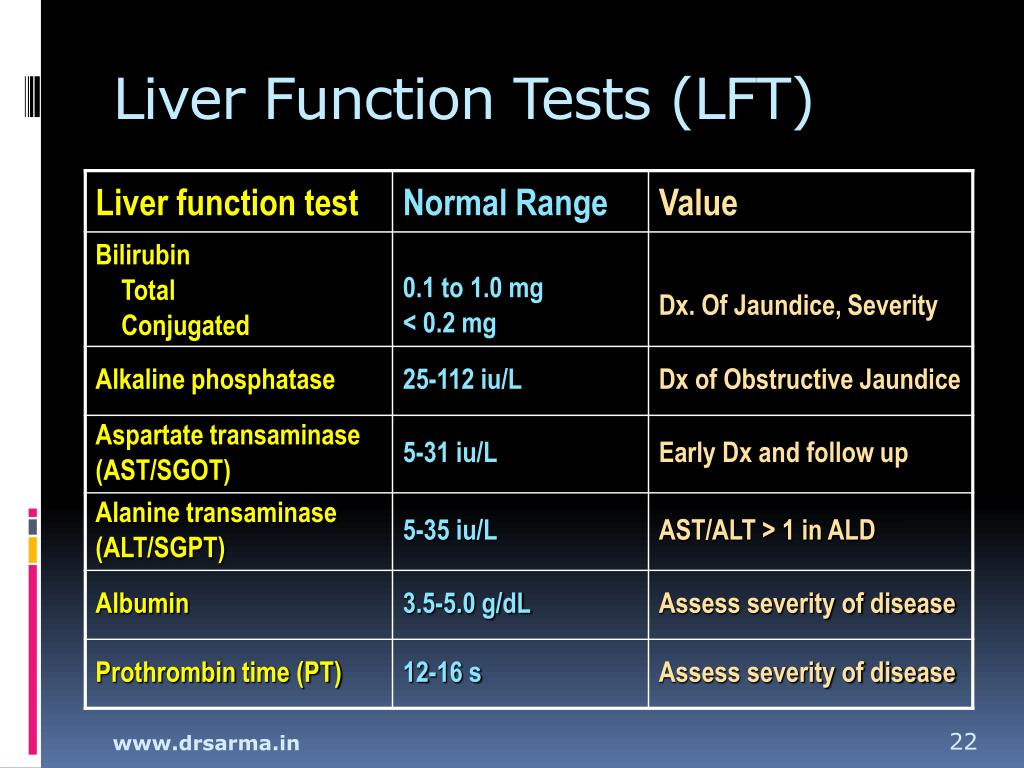 The diagnosis of acute hepatitis B is made with a positive test for IgM to HBcAg and the presence of HBsAg. Acute hepatitis B is more often than acute hepatitis C accompanied by clinical symptoms.
The diagnosis of acute hepatitis B is made with a positive test for IgM to HBcAg and the presence of HBsAg. Acute hepatitis B is more often than acute hepatitis C accompanied by clinical symptoms.
NAFLD
NAFLD is an extremely common disease associated with metabolic syndrome. Unlike ALD, there is no unique pattern of changes in ALT and AST for NAFLD, although ALT levels are usually more elevated than AST levels, and levels of both aminotransferases rarely exceed 300 IU/L. Although many individuals with NAFLD suspected of having steatosis on imaging studies may have normal liver tests, the presence of abnormal liver tests indicates a greater likelihood of non-alcoholic steatohepatitis. To establish this diagnosis accurately, a liver biopsy is required, although the role of a non-invasive method for determining the degree of fibrosis and steatosis, elastography, is also increasing.
ABP
Alcohol use is a common cause of elevated liver tests, either alone or in association with chronic liver disease.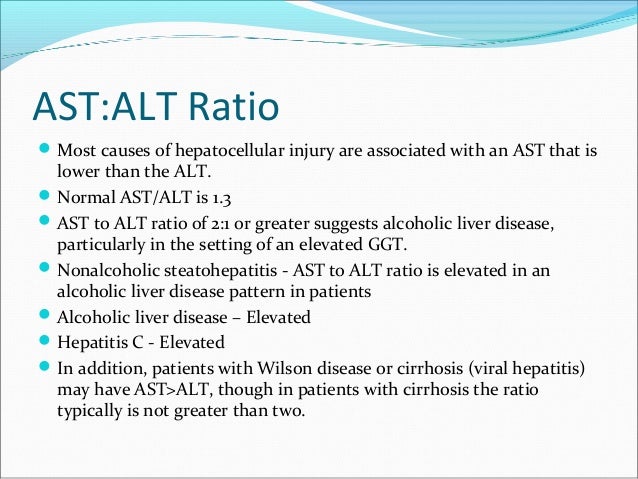 Specific patterns of changes in liver tests are associated with ALD, in particular the AST:ALT ratio of at least 2:1, and transaminase values rarely exceed 300 IU / L. A further increase in this ratio (3:1, 4:1, etc.) increases the likelihood of ABP. An additional test is the measurement of GGT. All patients with elevated liver tests should be directly asked about alcohol use, recommending that it should be completely discontinued.
Specific patterns of changes in liver tests are associated with ALD, in particular the AST:ALT ratio of at least 2:1, and transaminase values rarely exceed 300 IU / L. A further increase in this ratio (3:1, 4:1, etc.) increases the likelihood of ABP. An additional test is the measurement of GGT. All patients with elevated liver tests should be directly asked about alcohol use, recommending that it should be completely discontinued.
Autoimmune liver diseases
Chronic AIH, in which persistently elevated transaminases are noted, can develop in parallel with other autoimmune disorders (hypothyroidism, ulcerative colitis, Sjögren’s syndrome, rheumatoid arthritis, psoriasis). AIH is more common in women than in men (4:1). The characteristic laboratory signs of AIH are the presence of antinuclear antibodies, antismooth muscle antibodies, and less commonly, antirenal and antihepatic microsomal antibodies. The diagnosis of AIH requires histological confirmation with analysis taken from a liver biopsy of a tissue sample.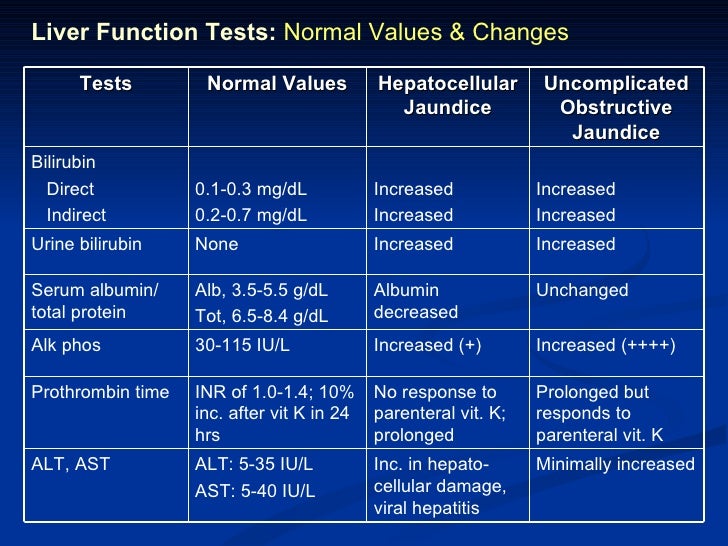
Drug injuries of the liver
Almost all drugs are associated with at least a minimal risk of elevated liver tests with or without concomitant hepatotoxicity. Among such drugs are antibiotics, antiepileptics, non-steroidal anti-inflammatory drugs, statins, anti-tuberculosis, chemotherapeutic and antiretroviral drugs. It should be noted that although statins are associated with increases in ALT and AST, cases of hepatotoxicity of these agents are rare, even in patients with chronic liver disease. Natural supplements associated with hepatotoxicity include ephedra preparations, green tea extract, and shark cartilage. An online source for information on drug hepatotoxicity is the livertox.nih.gov website. To determine drug damage, treatment should be stopped empirically until ALT/AST normalizes.
PBH
PBC, formerly known as primary biliary cirrhosis, is a rare chronic liver disease that predominantly affects the intralobular bile ducts at a microscopic level. PBC is more common in women than men and is associated with increased fatigue and itching. Laboratory examination reveals elevated alkaline phosphatase with or without elevated bilirubin, as well as the main criterion for diagnosis – a positive analysis for antimitochondrial antibodies (in > 95% of patients).
PBC is more common in women than men and is associated with increased fatigue and itching. Laboratory examination reveals elevated alkaline phosphatase with or without elevated bilirubin, as well as the main criterion for diagnosis – a positive analysis for antimitochondrial antibodies (in > 95% of patients).
Other
In patients with jaundice and abdominal pain, a history of previous hepatobiliary disease, including cholelithiasis and inflammatory bowel disease, should be taken. Other extrahepatic causes of abnormal liver function tests include heart failure (congestive hepatopathy), early stages of emphysema, celiac disease, and thyroid disease.
Physical examination findings in patients with abnormal liver tests are usually normal, but some symptoms (jaundice, ascites, splenomegaly, palmar erythema, hepatic encephalopathy) may help confirm the presence of liver disease. In addition, the etiology of the disease can be suspected by specific symptoms. For example, contractures
For example, contractures
Dupuytren in combination with an increase in the parotid salivary glands and testicular atrophy may accompany ALD; bronze skin color – hereditary hemochromatosis; severe hepatomegaly – acute viral or alcoholic hepatitis; enlarged nodular liver – a malignant process; right hypochondrium tenderness and a positive Murphy’s sign are hepatobiliary diseases (primarily cholecystitis).
From:
Paul Y. Kwo, Stanley M. Cohen, Joseph K. Lim. ACG Clinical Guideline: Evaluation of Abnormal Liver Chemistries. Am J Gastroenterol advance online publication, 20 December 2016; doi:10.1038/ajg.2016.517
Prepared by Larisa Strilchuk
Medical newspaper “Health of Ukraine 21 stories” No. 17 (438), spring 2018
- Number:
- Medical newspaper “Health of Ukraine 21 stories” No. 17 (438), spring 2018
09.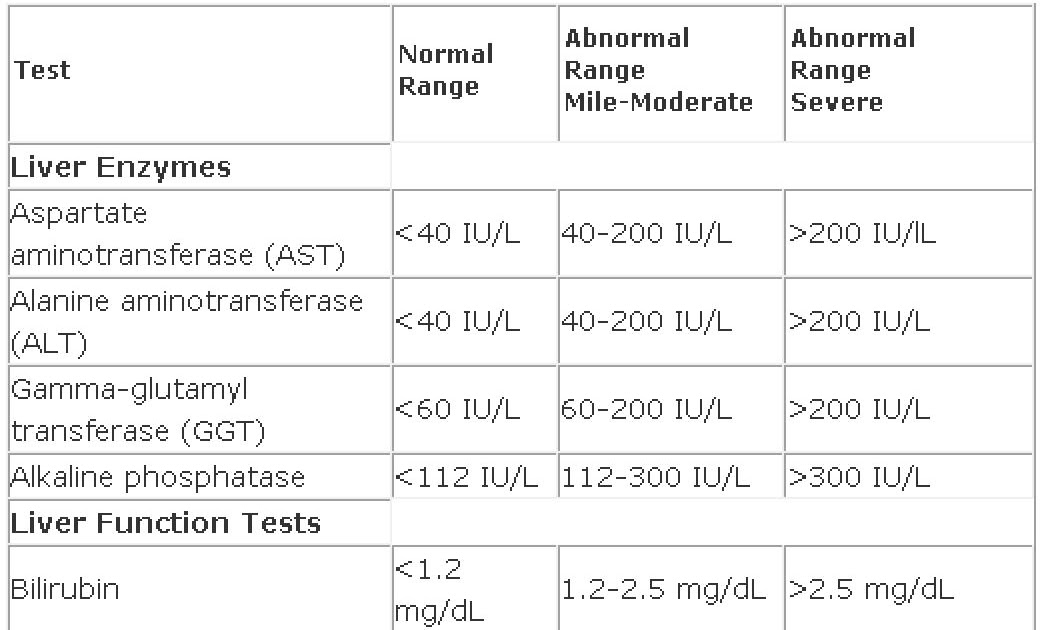 06.2023
06.2023
CardiologyTherapy and family medicineInfluence of stress on arterial hypertension as the main cause of mortality risk for hypertensive illness
Psychological symptoms of stress, anxiety disorders, depression or anger, are some of the predictors of hypertension (Mezzacappa et al., 2001). Vlasne, stress is caused by hyperactivation of the autonomic nervous system, impaired regulation of the hypothalamic-pituitary-supra-pituitary axis and maladaptive mechanisms of the way of life, like smoking, alcohol addiction, obesity and lack of fat natural activity (Mezzacappa et al., 2001; Brotman et al ., 2007).
…
06/06/2023
The 24th of May marks the All-World Day of the Fight against Schizophrenia. Iz TsI -nago, “Gideon Rikhter” Visvіtlu, is relevant about the tsu a brushwood, the bouty is the cork for the Patziyntiv itself, the member of the їkhnіkh, and this is the observation of the suspension of suspension. Schizophrenia is a form of neuro-psychic illness, as it affects ≈1 out of 100 people with a protracted life, so that today in the world ≈80 million people with schizophrenia. Most of the sickness develops in the young age between 15 and 30 years, and it can amaze anyone. In the public eye, it is often in Hollywood films that the ailment gets tangled up in the division of specialness and dissociative discord of specialness. Vtіm, tse does not mean that ailments for schizophrenia may have a decade of special features. Henceforth, the term “divided knowledge” is old-fashioned and does not mean a divided specialty of self-confidence, but caused by ill health, disruption of the emotional sphere, mentality, and behavioral functions. It’s a pity that in most cases of schizophrenia accompanied by an ailing protracted life, however, it’s not good to do good with modern drugs and a kind of supportive therapy, which gives patients a chance to live active and completely other lives.
Iz TsI -nago, “Gideon Rikhter” Visvіtlu, is relevant about the tsu a brushwood, the bouty is the cork for the Patziyntiv itself, the member of the їkhnіkh, and this is the observation of the suspension of suspension. Schizophrenia is a form of neuro-psychic illness, as it affects ≈1 out of 100 people with a protracted life, so that today in the world ≈80 million people with schizophrenia. Most of the sickness develops in the young age between 15 and 30 years, and it can amaze anyone. In the public eye, it is often in Hollywood films that the ailment gets tangled up in the division of specialness and dissociative discord of specialness. Vtіm, tse does not mean that ailments for schizophrenia may have a decade of special features. Henceforth, the term “divided knowledge” is old-fashioned and does not mean a divided specialty of self-confidence, but caused by ill health, disruption of the emotional sphere, mentality, and behavioral functions. It’s a pity that in most cases of schizophrenia accompanied by an ailing protracted life, however, it’s not good to do good with modern drugs and a kind of supportive therapy, which gives patients a chance to live active and completely other lives. …
…
06/05/2023
Therapy and family medicine Melatonin for sleep disturbance
Melatonin is the main hormone that plays a role in controlling the sleep-life cycle.
Vin is easily synthesized and can be ingested orally. This production changes over time proportionally to the frequency of the nasty sleepiness, but it confirms the admission that the deficiency of melatonin is the cause of these disorders. Tse zoomovlyuє interest to yogo vikoristannya for exalted sleeplessness.
In this view, the physiology of melatonin, the pharmacological characteristics of iodine exogenous administration, and data on clinical measles are examined….
06/05/2023
Therapy and family medicineIntroduction to the body of a person after suffering from COVID-19 bioregulation methods
іyna zokrema therapy.
In birch, the medical congress “A patient at the center of respect of an interdisciplinary team: mutual relations of equal medical assistance”, in which the assistant professor of the Department of Family Medicine and Outpatient Clinical Assistance of the National University of Defense took part and healthy Ukraine im. P.L. Shupika (m. Kiev), candidate of medical sciences Lyudmila Grigorivna Matviets. We encourage readers to look at the additional information of Lyudmila Grigorivna in the format “supply – advice”….
Biochemical blood test – decoding of biochemistry
A biochemical blood test has to be taken almost more often than a general clinical one. We will help you understand the main indicators of “biochemistry”.
Doctor’s consultation
You can get the consultation of the necessary specialist online in the Doctis application
Laboratory
You can undergo a comprehensive examination of all major body systems
- Blood glucose (Glucose)
- ALT – the norm for women and men
- AST – norm for women and men
- GGTP – the norm for women and men
- Total bilirubin
- Amylase
- Total protein
- Total cholesterol
- Creatinine – the norm for women and men
- Urea
- Uric acid
- Potassium in biochemical analysis
- Blood sodium level
Biochemical blood tests
Glucose.
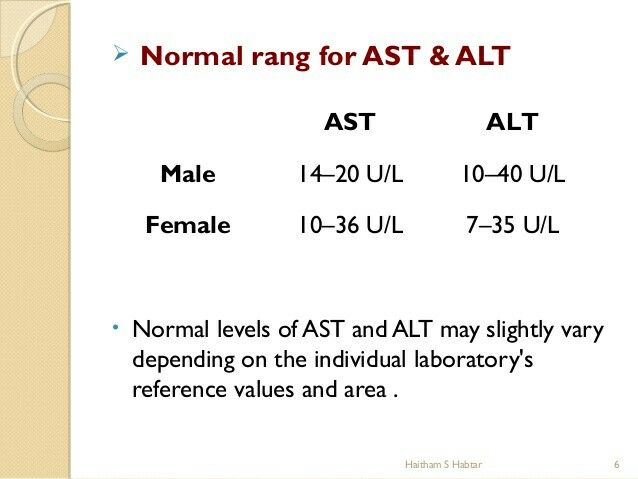 Norm – 3.9-5.8 mmol / l
Norm – 3.9-5.8 mmol / l
An increase in fasting glucose in the results of a biochemical blood test indicates a violation of carbohydrate
metabolism in varying degrees of severity – from impaired glucose tolerance to sugar
type 1 or type 2 diabetes. The upper limit of the norm is declared as 5.8 mmol / l, but recently many
experts “push back” this border to 6.1 mmol / l for people over 60 years old.
Indicators in the corridor from 6.1 to 6.69 indicate impaired glucose tolerance or
prediabetes, at this stage it is not too late to stop the development of the disease by changing the diet, losing weight and getting rid of
from bad habits.
A reading above 6.7 mmol/L is highly likely to indicate diabetes,
but this is not final either. Endocrinologists
in this case, it is advised to take an additional analysis for glycated
hemoglobin – it will show the average glucose in blood plasma for the last three
month.
ALT. The norm is less than 31 U / l for women and 41 U / l for men.
This enzyme is synthesized mainly in the liver, and usually only a small amount of it enters the blood
quantity. An increase in values in the results of the analysis is typical for diseases of the liver – fatty
hepatosis, (when due to malnutrition with a predominance of fatty foods and alcohol, hepatocytes are replaced
fat cells), as well as hepatitis – viral, toxic (where in the first place is alcohol,
then medicinal), autoimmune and others, as well as liver cirrhosis. Another possible reason for the increase
– Recent myocardial infarction.
AST. The norm is less than 31 U / l for women and 37 U / l for men.
Also a liver enzyme, an increase in blood concentration indicates damage to this important organ.
True, it is also found in the heart, kidneys, and skeletal muscles. Rarely rises in isolation and almost
always accompanies an increase in ALT. In this case, you need to contact a gastroenterologist without delay,
In this case, you need to contact a gastroenterologist without delay,
the liver suffers. In isolation, it can increase with myocardial infarction, kidney injury, damage to skeletal muscles,
heart failure. And sometimes – after excessive physical activity.
GGTP. The norm is less than 49 U / l for women and 32 U / l for men.
Another “liver” indicator and the main marker of cholestasis is bile stasis. And also his
an increase often indicates frequent abuse of alcoholic beverages.
Total bilirubin. The norm is 3.4-17.1 µmol / l.
An important indicator of liver function, the main component of bile. If the value is normal, then all links are working
Fine. If the indicator is increased as a result of a biochemical blood test, in the laboratory
they will conduct an additional analysis and find out due to which component the increase occurred. There are two
– direct (bound) and indirect (free) bilirubin . If the increase was due to
indirect, it means that the problem is in the release of bilirubin from blood cells, in the body there is
hemolysis is the destruction of red blood cells. If due to direct, then the problem is in the liver,
If due to direct, then the problem is in the liver,
a violation of bile secretion and absorption begins or already occurs, clinically manifested by jaundice.
Amylase. Norm – 28−100 U / l.
A pancreatic enzyme also found in the intestines. Amylase increase in biochemical
blood parameters indicates the development of inflammation of the pancreas – acute or chronic
pancreatitis. If intestinal damage cannot be ruled out, a more “targeted” analysis should be performed.
for pancreatic amylase.
Total protein. Norm – 64−83 g / l.
Indicator of basic protein metabolism in our body. Possible – hypoproteinemia (decrease in level),
hyperproteinemia (increased level) and dysproteinemia (violation of the ratio of the main proteins – albumin and globulins).
An increase in the level of protein in a biochemical blood test indicates a protein-rich diet.
Decreased levels are a dangerous symptom that can indicate many causes, ranging from starvation to
oncological disease.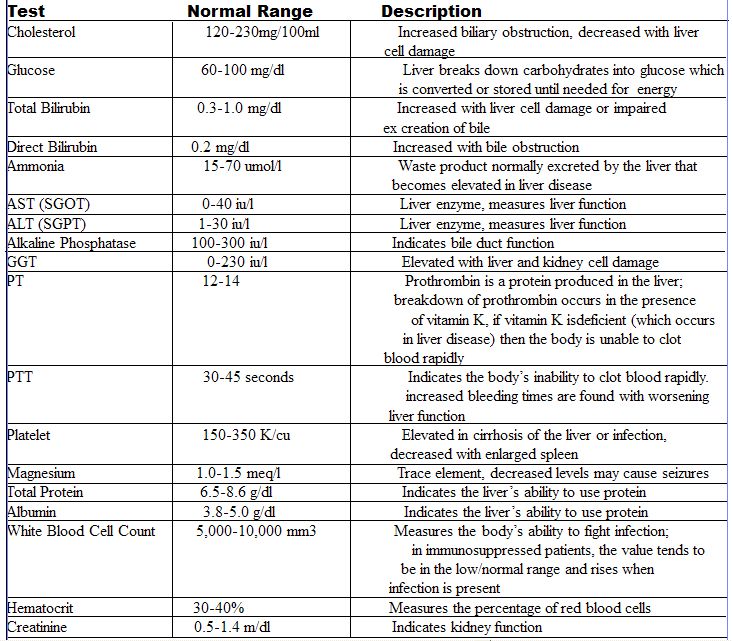
Total cholesterol. The norm is 3.0-7.2 mmol / l, depending on gender and age.
An indicator of the level of total cholesterol currently contained in plasma. Level up traditionally
is considered an unfavorable sign of the development of vascular atherosclerosis, although in fact clarification is required, due to
which component is increasing. (About “bad” and “good” cholesterol, we separately
we will tell you shortly).
Creatinine. Norm – 53−97 µmol/l for women and 62-115 µmol/l for men.
Indicator of the urinary system. Increase in creatinine levels as a result of biochemical analysis
indicates some stage of renal failure. But it can also increase in the blood
after significant physical exertion, temporary “overload” of the kidneys with protein foods or drugs, in athletes.
This increase normalizes after some time.
Urea. Norm – 2.5-6.4 mmol / l, after 60 years – 2.9−7.5 mmol/l.
Another “kidney” indicator. In fact, this is an indicator of the level of protein breakdown, but usually
In fact, this is an indicator of the level of protein breakdown, but usually
an increase in the level of urea does not indicate this, but the inability of the kidneys to excrete the usual
amount of degraded protein.
Doctors use this blood chemistry reading to monitor
treatment of renal failure and assessment of the condition of patients. In those who adhere to a protein diet, it is possible
episodic increase in the level of urea in relatively healthy kidneys.
Uric acid. The norm is 150-350 µmol/l for women and 210-420 µmol/l for men.
Despite the name, it is no longer used to assess the condition of the kidneys, but to identify
gout. It is the development of this disease that is indicated by an increase in uric acid in plasma, and the appearance of
Pain in the joints typical for the disease only confirms the laboratory diagnosis.
Potassium. The norm is 3.5-5.5 mmol / l.
An increase in the level of this electrolyte most often indicates the development of renal failure, as a result
which interferes with electrolyte excretion.

 org/10.1373/clinchem.2017.274977
org/10.1373/clinchem.2017.274977